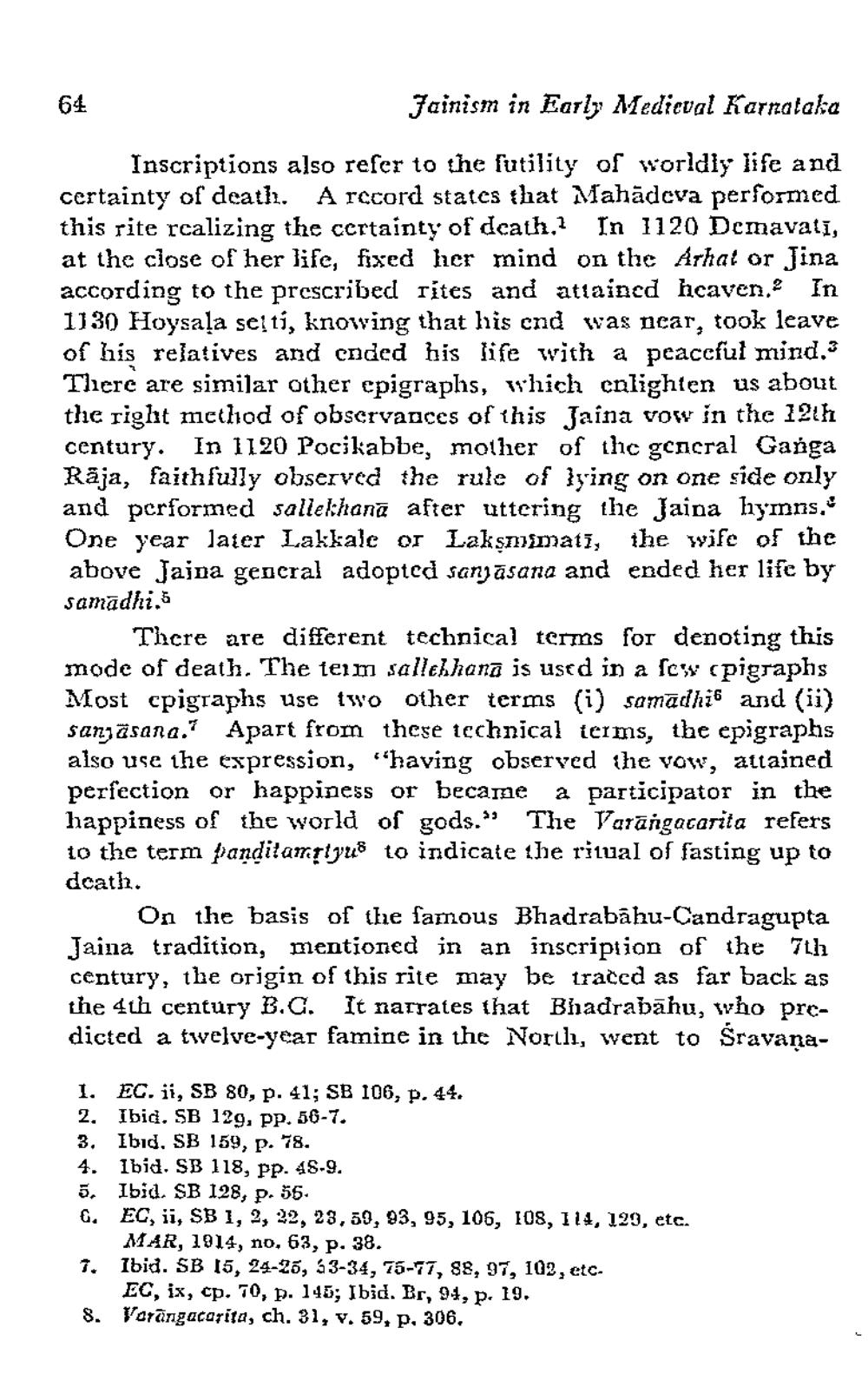________________
64
Jainism in Early Medicval Karnataka
Inscriptions also refer to the futility of worldly life and certainty of death. A record states that Mahādeva performed this rite realizing the certainty of death. In 1120 Demavati, at the close of her life, fixed her mind on the Arhal or Jina according to the prescribed rites and attained hcaven.2 In 1130 Hoysaļa selti, knowing that his end was ncar, took leave of his relatives and cnded his life with a peaceful mind.3 There are similar other cpigraphs, which enlighten us about the right method of obscrvances of this Jaina vow in the 12th century. In 1120 Pocikabbe, mother of the gcncral Ganga Räja, faithfully observed the rule of lying on one side only and performed sallekhana after uttering the Jaina hymns, One year later Lakkale or Lakşmati, the wife of the above Jajna gencral adopted sanjāsana and ended her life by samadhi.s
There are different technical terms for denoting this mode of death. The term sallelhana is used in a scs cpigraphs Most cpigraphs use two other terms (i) samadhit and (ii) sanjösana." Apart from these technical terms, the epigraphs also use the expression, "having observed the vow, attained perfection or happiness or became a participator in the happiness of the world of gods." The Varāngacarita refers to the term pandilamtyus to indicate the ritual of fasting up to dcath.
On the basis of the famous Bhadrabāhu-Candragupta Jaina tradition, mentioned in an inscription of the 7th century, the origin of this rite may be traced as far back as the 4th century B.G. It narrates that Bhadrabāhu, who prcdicted a twelve-year famine in the North, went to Sravana
1. EC. ii, SB 80, p. 41; SB 106, p. 44. 2. Ibid. SB 129, pp. 56-7. 3. Ibid. SB 159, p. 78. 4. Ibid. SB 118, pp. 48-9. 5. Ibid. SB 128, p. 56. 6. EC, ii, SB 1, 2, 22, 23, 59, 93, 95, 106, 108, 114, 129, etc.
MAR, 1914, no. 63, p. 38. Ibid. SB 15, 24-25, 53-34, 75-77, 88, 97, 102, etc.
EC, ix, cp. 70, p. 145; Ibid. Br, 94, p. 19. 8. Vorāngacarita, ch. 31, v. 59, p. 306.




